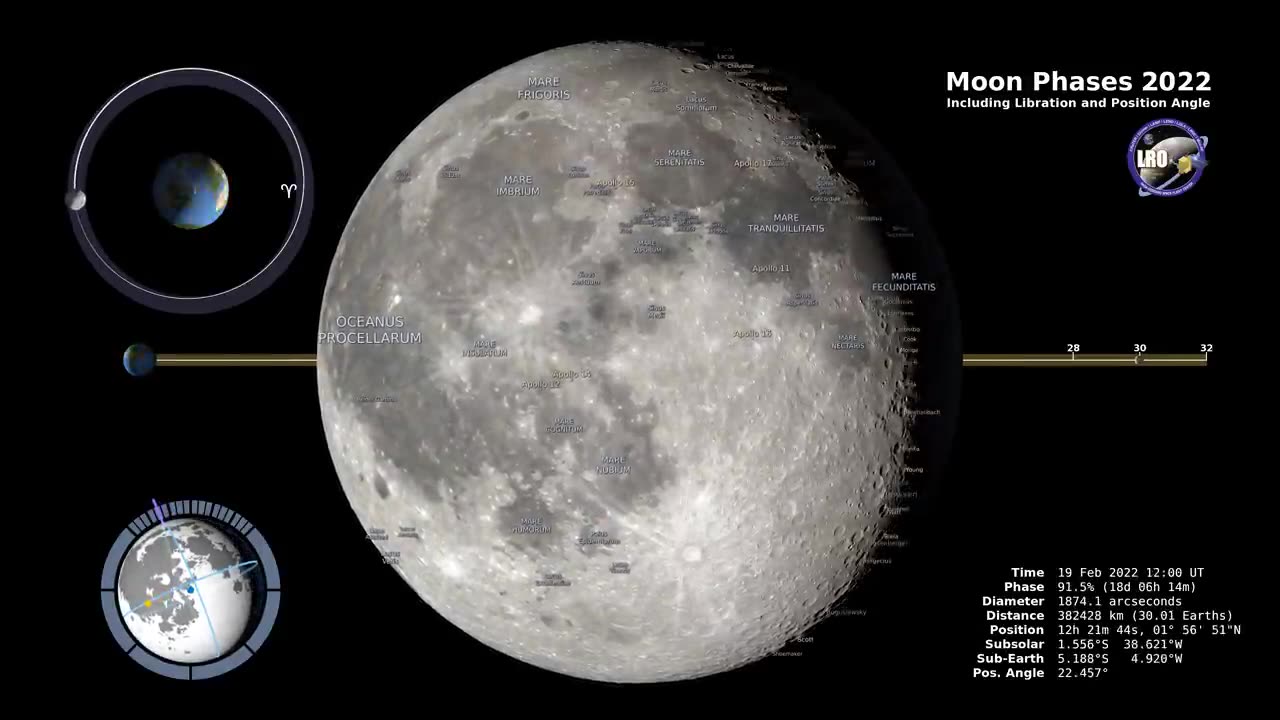Premium Only Content

Phases of the moon in 2022.
Throughout the year 2022, the moon will go through its various phases, presenting a captivating celestial display for observers on Earth. These phases are a result of the moon's orbit around our planet and its position relative to the sun.
New Moon: At the start of each lunar cycle, the moon is in its New Moon phase. During this phase, the moon is positioned between the Earth and the sun, and its dark side faces our planet, making it appear as a black circle in the night sky. New Moons are excellent for stargazing because their absence of light pollution enhances the visibility of other celestial objects.
Waxing Crescent: As the days progress from the New Moon, a slender crescent of light begins to emerge on the moon's right side (for observers in the Northern Hemisphere) or left side (for observers in the Southern Hemisphere). This phase is known as the Waxing Crescent, and it marks the moon's gradual transition from darkness to illumination.
First Quarter: Approximately one week after the New Moon, the moon reaches its First Quarter phase. During this stage, half of the moon's surface is visible from Earth, and it appears as a half-moon in the sky. This is when the moon is at a 90-degree angle to the Earth-sun line.
Waxing Gibbous: Following the First Quarter, the moon continues to wax, or grow in illumination, and appears as a progressively larger and more illuminated crescent. This phase is known as the Waxing Gibbous.
Full Moon: Around two weeks after the New Moon, the moon reaches its Full Moon phase. During this phase, the entire face of the moon that is visible from Earth is illuminated by the sun's light, creating a brilliant and round appearance in the night sky.
Waning Gibbous: After the Full Moon, the moon enters the Waning Gibbous phase, where it appears as a shrinking, illuminated crescent. The illumination decreases as it moves toward the Last Quarter.
Last Quarter: About three weeks after the New Moon, the moon reaches its Last Quarter phase. During this phase, half of the moon's surface is again visible, but this time, the left side (for Northern Hemisphere observers) or right side (for Southern Hemisphere observers) is illuminated.
Waning Crescent: In the final phase of the lunar cycle, the moon appears as a thin crescent that continues to shrink until it becomes too faint to see. This is known as the Waning Crescent, and it marks the end of one lunar cycle and the beginning of a new one.
These moon phases provide a mesmerizing and ever-changing spectacle in the night sky, influencing cultural traditions, religious practices, and natural phenomena on Earth.
-
 LIVE
LIVE
Dr Disrespect
3 hours ago🔴LIVE - DR DISRESPECT - BLACK OPS 7 MULTIPLAYER GAMEPLAY - NEW!
1,821 watching -
 1:01:36
1:01:36
Dear America
1 hour agoEpisode 2 Graham Allen Show
6.93K14 -
 1:59:01
1:59:01
The Charlie Kirk Show
2 hours agoCancel Netflix? + The Secret Service Disaster + Turning Point Everywhere | Tatum, Cocca, Gaffrey
50.4K27 -
 LIVE
LIVE
ahdedazs
54 minutes agoBlack Ops 7 EARLY ACCESS BETA! First Stream on RUMBLE!
59 watching -
 LIVE
LIVE
ZENNY
1 hour agoBO7 IS HERE BOT POV MF HAHAHAHA 6v6 PG18+ | UNFILTERED CHAT | CURSES AND BAD
113 watching -
 LIVE
LIVE
qixso
2 hours ago $0.26 earnedBO7 IS HERE TAP IN !! | @qixso
100 watching -
 1:37:49
1:37:49
Tucker Carlson
15 hours agoBlackmail, Bribes, and Fear: Netanyahu Claims He Controls Donald Trump and America. Tucker Responds.
58.3K231 -
 1:37:29
1:37:29
The Mel K Show
2 hours agoMORNINGS WITH MEL K - Information Warfare & Common Sense 10-2-25
8.16K5 -
 1:26:12
1:26:12
Steven Crowder
5 hours agoThe Left is Violent (Part 2) | Change My Mind
273K401 -
 40:54
40:54
The Rubin Report
3 hours ago‘The View’ Hosts Aghast When Mamdani Accidentally Repeats Hamas Talking Points
44.1K64